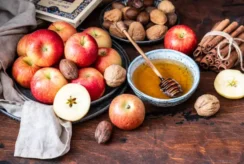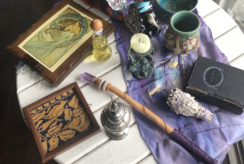20 MARCH 2024/ 10 ADAR II 5784

Seriously? Two months of Adar this leap-year, of all years??
When we are told to marbim b’simcha, increase our joy, and delight and bask in revelry and merry-making? (“Why?” one might wonder. Because tomorrow we might die!)
What a cruel joke.
Superficially, I am in no mood to rejoice. That’s for sure. But I do feel the tug toward expressions of gratitude and awe around being alive, that there are survivors, that grass and flowers have managed to grow in the blood-soaked fields of the Nova festival.
It’s strange that just as Adar II rolled in, I felt something shift and the weight of despair lift a smidge. Is it a mere fluke? Did I begin this writing project just about then and so in my searching and reading, I am being pulled out from the depths? I just checked and the dates do coincide. The rhythms of this calendar flow naturally within me, and whether or not I am aware and mark the meanings of each month, my soul flows according to our journey around the Jewish year.
Our tradition actually discourages unrestrained total glee. Our weddings, presumably one of the happiest times of our lives, end with the broken glass, a somber nod to the destruction of the Temple and the ills of this world yet left to be repaired. Lest we be too happy, we take a moment. What is it about us?! Can’t we forget our troubles and focus solely on the joy for just one afternoon? Oh, no.
According to Yosef Hayim Yerushalmi, the term “remember” appears 169 times in our Bible. We remember our time of enslavement in Egypt, we remember various tragedies by marking them with fast days and special prayers. We are even warned not to forget to remember Amalek and his heartless attacks on our people. We have to hold it all, all the time! How and when are we permitted to move on?
I do not consider myself to be a halakhic Jew in the strict sense of the word, yet I am drawn to know about the mitzvot and to have some kind of built-in practice to which I am accountable. It is a mitzvah to feel joy at this time. I remember in 2002 while my family and I were sitting shiva for my beloved grandmother, Gran (z”l), I had a huge “Aha!” turn in my understanding of the meaning of joy. In our grief, we were able to be so bonded. Through the stories we told and the hugs we shared, we felt closer than we had ever been. We felt deeply connected in our sadness. And that felt existentially comforting. I realized that the magic of the connection -to one another, to Gran-settled me into a tangible connection with The Divine.
Joy is all about connection. I am considering this mitzvah of increasing joy, and understanding it as an instruction to seek out connections. For me, at this time in history, it will not look like a whooping parade or raucous drinking game. In fulfilling this injunction around simcha – through connecting with others and seeking out and marking goodness where I find it- my joy will be activated.
Dan Gelbtuch, a grandchild of Holocaust survivors, writes in the newsletter for Kirva (formerly the Inside Out Wisdom and Action Project) that simcha “underlies all reality and can co-exist with transitory feelings of sadness and anxiety.” Our shock and fears and grief and feelings of hopelessness are not new states for our people. We’ve been here before. My father, z”l, would often remind me that every generation feels that they are living in the worst of times. And, this too shall pass.
At the moment, I have no idea how the troubles in our world will improve. Apparently, I don’t need to have the solutions. What I do need is to zoom out and back and inward to reach toward the joy, to that which is life-affirming, and then practice welcoming it to my table.

